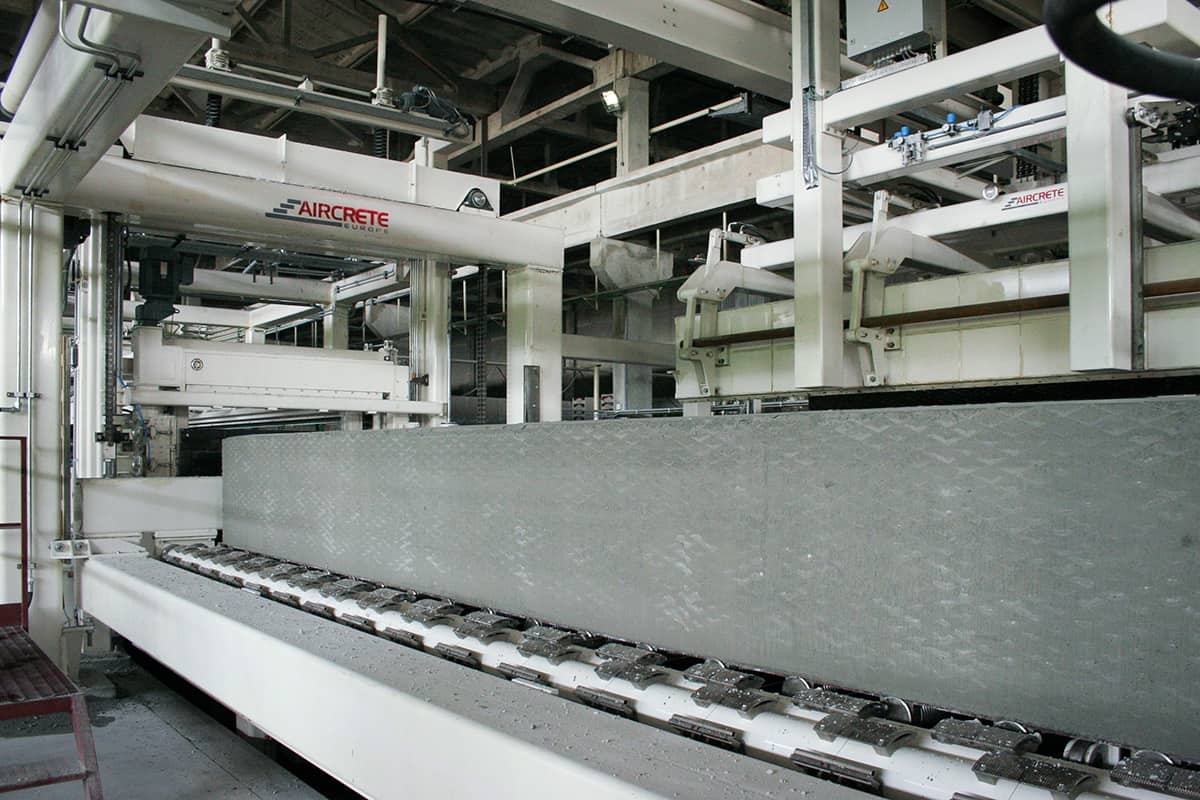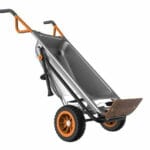Considering a new building project and seeking an environmentally friendly material? Aircrete might be the perfect solution. This definitive guide delves into every aspect of this innovative material, from its composition and manufacturing to its impressive lifespan and diverse applications. We’ll compare it to traditional concrete, explore its pros and cons, and help you determine if it’s the right choice for your project, whether it’s a small home renovation or a large-scale commercial undertaking. We’ll also address its performance in various climates, ensuring you build a structure that stands the test of time.
Understanding Aircrete: A Lightweight Revolution in Building
Aircrete is generating significant buzz in the construction industry, and for good reason. This lightweight, porous material is transforming the way we build, offering a sustainable and often more cost-effective alternative to traditional concrete. Think of it as a superior version of concrete, but significantly lighter and more environmentally friendly. Let’s explore the details.
What is Aircrete?
Aircrete is a type of lightweight concrete created by blending cement, water, and a specialized foaming agent. This agent introduces millions of microscopic, uniformly distributed air bubbles, typically comprising at least 20% of the material’s volume. These air cells are key to aircrete’s unique properties. It’s not just any foam; the consistent spacing of the air cells ensures uniform strength and performance.
The Aircrete Manufacturing Process
The production process is surprisingly intricate. Cement, water, and the foaming agent are precisely combined to create a uniform, airy mixture. This mixture is then poured into molds and allowed to cure. Several methods exist, ranging from simple hand-mixing for smaller projects to highly automated systems used for mass production. The manufacturing process significantly influences the final properties of the aircrete, requiring careful control. [https://www.lolaapp.com/How Do They Make This Stuff?]
Aircrete: A Comparative Analysis
Aircrete offers compelling advantages over traditional concrete. Its significantly lower weight simplifies transportation and handling. Furthermore, its insulation properties are exceptional. A single inch of aircrete wall can offer an R-value of approximately 6, considerably surpassing that of standard concrete. This translates to substantial energy savings for heating and cooling. Additionally, aircrete exhibits excellent fire resistance and superior soundproofing capabilities compared to traditional concrete.
| Feature | Aircrete | Traditional Concrete |
|---|---|---|
| Weight | Much lighter | Much heavier |
| Insulation (R-value) | High (approximately R-6 per inch) | Low |
| Fire Resistance | Excellent | Moderate |
| Soundproofing | Excellent | Poor |
| Compressive Strength | Lower but adequate for many applications | High |
| Cost | Generally more affordable | More expensive |
| Environmental Impact | Lower embodied carbon; more sustainable | Higher embodied carbon; less sustainable |
Diverse Applications of Aircrete
Aircrete’s versatility is a key selling point. It’s widely used in residential construction for walls, roofs, and floors, and is especially well-suited for innovative dome structures. Commercial applications include lightweight partitions and interior walls. Prefabricated construction, notably using autoclaved aerated concrete (AAC) panels, is also experiencing significant growth. [https://www.lolaapp.com/Where Does Aircrete Shine?]
Weighing the Pros and Cons: Is Aircrete Right for Your Project?
A balanced perspective is crucial. While aircrete offers numerous advantages, understanding its limitations is essential for informed decision-making.
Advantages:
- Lightweight and easy to handle.
- Excellent thermal insulation, reducing energy consumption.
- Superior fire resistance and noise reduction, enhancing safety and comfort.
- Often more cost-effective than traditional concrete, especially considering long-term energy savings.
- Environmentally friendly, minimizing your carbon footprint.
Disadvantages:
- Lower compressive strength than traditional concrete, limiting its use in high-load-bearing applications. [https://www.lolaapp.com/Is aircrete as strong as concrete?]
- Susceptibility to moisture damage if not properly sealed. [https://www.lolaapp.com/What are the disadvantages of aircrete?]
- May require specialized tools or techniques for specific applications.
Aircrete Cost Analysis: A Long-Term Investment
The price of aircrete varies based on location and project scale. However, industry experts suggest that, for comparable constructions, aircrete can be 15-25% less expensive than dense concrete. Combining this upfront cost savings with the long-term energy efficiency makes a compelling financial case. A detailed cost analysis tailored to your specific needs is strongly recommended.
Aircrete and Sustainability: A Greener Choice for Construction
Aircrete presents itself as an environmentally conscious choice. Its reduced cement content and lighter weight contribute to a significantly lower carbon footprint compared to standard concrete. This is particularly appealing to builders committed to sustainable practices. [https://www.lolaapp.com/Aircrete and the Environment: A Sustainable Solution]
Is Aircrete as Strong as Concrete? A Detailed Comparison
Aircrete and traditional concrete, while both forms of concrete present significant differences. The key difference lies in compressive strength—the amount of weight a material can bear before failure. Aircrete typically has about half the compressive strength of conventional concrete. However, this doesn’t automatically make it inferior. Aircrete’s other advantages often compensate for this difference. [https://www.lolaapp.com/Is aircrete as strong as concrete?]
| Material | Typical Compressive Strength (MPa) | Notes |
|---|---|---|
| Standard Concrete | 25-40 | This varies based on mix design and quality. |
| High-Strength Concrete | 50-80+ | Used where extra strength is needed. |
| Aircrete | 2.5 – 20 | This range reflects different aircrete types and manufacturers. |
Aircrete’s Drawbacks: Addressing Potential Challenges
While aircrete offers many benefits, it’s essential to acknowledge its limitations. Understanding these drawbacks is crucial for project success. [https://www.lolaapp.com/What are the disadvantages of aircrete?]
Upfront Costs: Initial Investment
Aircrete production necessitates specialized equipment, potentially leading to higher initial costs compared to traditional concrete, especially for smaller projects. The energy-intensive manufacturing process also contributes to the overall cost. However, long-term energy savings can offset this initial investment.
Moisture Sensitivity: Protection is Key
Aircrete’s porous nature, while beneficial for insulation, makes it susceptible to water absorption. In freezing climates, this absorbed water can expand and cause cracking. The use of appropriate sealants and water-repellent coatings is critical to prevent this.
Strength Limitations: Choosing the Right Application
Aircrete’s lower compressive strength means it’s not suitable for load-bearing applications requiring significant structural integrity. It is however, perfectly suited for non-load-bearing walls, infill panels, and roof elements.
Surface Finishing: Specialized Techniques
Achieving a smooth, paintable surface on aircrete requires specialized primers and techniques, potentially increasing labor and material costs.
The Lifespan of Aircrete: A Century and Beyond
How long does an aircrete structure last? Under ideal conditions, aircrete structures can endure for well over a century, potentially lasting for several centuries. Its durability stems from its non-organic nature, resistance to rot and insect infestation, and remarkable fire resistance. [https://www.lolaapp.com/How long will aircrete last?]
Factors Affecting Longevity
While exceptionally durable, several factors can influence aircrete’s lifespan. Harsh weather conditions, particularly repeated freeze-thaw cycles, can introduce moisture and cause cracking. Improper construction, including inadequate foundations or rushed curing processes, also negatively impact longevity. However, these issues are primarily preventable through proper construction techniques.
Aircrete’s Inherent Durability
Aircrete’s longevity is attributed to its composition and properties:
- Non-organic: It doesn’t rot or degrade through biological processes.
- Fire Resistant: It can withstand temperatures exceeding 2000°F for up to four hours.
- Insect Resistant: It is not susceptible to insect damage.
Maximizing Aircrete’s Lifespan
To ensure maximum lifespan, proper construction techniques are paramount. This includes meticulous foundation preparation, careful block placement, and adhering to the manufacturer’s curing instructions. Minimal routine maintenance is required, making it cost effective in the long term.
Navigating Local Regulations: Compliance is Key
Building codes for aircrete vary regionally. Before commencing any aircrete project, it’s crucial to review and comply with all relevant local building codes and regulations. Consulting with your local building inspector is highly recommended to avoid potential issues.
The Future of Aircrete: Ongoing Research and Innovation
The future of aircrete appears bright. Ongoing research focuses on enhancing its strength, developing new formulations, and expanding its applications within the burgeoning green building sector. Advances in prefabricated construction utilizing aircrete are particularly promising, and entirely new applications are likely to emerge in the years to come.
Conclusion: Choosing the Right Material for Your Project
Aircrete is not a direct replacement for concrete, but a complementary material with unique strengths. Its lightweight nature, exceptional insulation, and environmental benefits make it an excellent choice for many applications. However, its lower strength and sensitivity to moisture require careful consideration. A thorough understanding of aircrete’s characteristics, advantages, and limitations is essential to making an informed decision for any construction project. Remember to consult with experts to ensure your specific needs are met.
- Jerry McSorley’s Post-Divorce Life: New Beginnings - July 16, 2025
- The Rise and Fall of the New Haven Nighthawks: A Minor League Hockey Legacy - July 16, 2025
- Unlock Jerry McSorley’s Career Highlights: Eye Tax Inc.’s Solar Success - July 16, 2025
















